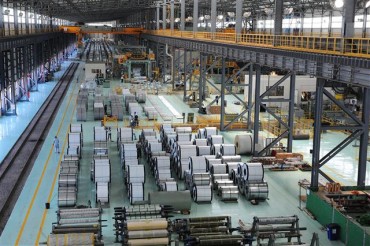
The World Heritage Committee decided to give the World Heritage status to the South Korean mountain fortress, Namhansanseong. (image: DreamAnvil/flickr)
SEOUL, June 24 (Korea Bizwire) – The UNESCO World Heritage Committee decided to enlist Korea’s Namhansanseong, or literally meaning “South Han Mountain Fortress,” as a World Heritage site.
The Cultural Heritage Administration of Korea announced on June 22 that the World Heritage Committee decided to give the World Heritage status to the South Korean mountain fortress during its 38th assembly being held at Doha, Qatar, from June 15 till 25.
Designed as an interim capital for the Joseon Dynasty (1392-1910) near Seoul, South Korea, Namhansanseong is an excellent example of a fortified city built by Buddhist soldier-monks. The mountain fortress and its surroundings have witnessed and experienced a long period of development as military facilities and it facilitates a better understanding of different styles and techniques of fortress construction.
The fortress has about 200 historic sites and buildings, including Haenggung, a temporary palace where Joseon kings stayed during their trips out of Seoul and wars. Especially, the committee highly praised that the fortress embodies a synthesis of the defensive military engineering concepts of the period, based on Chinese and Japanese influences, and changes in the art of fortification following the introduction from the West of weapons using gunpowder.
It also added that the fortress has always been inhabited, and which was the provincial capital over a long period, it contains evidence of a variety of military, civil and religious and has become a symbol of Korean sovereignty.
Namhansanseong’s history dates back to the Baekje Period which was founded by King Onjo. In AD 672, a fortress called Jujangseong was built on the western edge of Mt. Namhan to protect Shilla from Tang China. Present fortified walls were built on this site during the Joseon Period. By the designation, the fortress can be supported by the UNESCO World Heritage Center technically and financially.
An official at the Cultural Heritage Administration said, “Because the committee recommended regulating any excessive development near the area and encouraging local residents to participate in preserving and managing the heritage site, we will work with related local governments and other groups to set up systematic measures to protect and promote the country’s cultural asset.”
Gyeonggi Province which has jurisdiction over the fortress site expects more tourists will come to the province thanks to the international popularity and easy accessibility from Seoul and also expects the local economy will be boosted thanks to the increased tourists.
An official at the Gyeonggi Provincial government said, “Our province plans to develop hiking trails to attract more visitors to the historic site and hire professional historians to provide explanations to visitors on the structure’s development and its current form.”
With the addition of Namhansanseong to the World Heritage list, South Korea now possesses 11 sites on the list including the Jongmyo Shrine, Seokguram Grotto and Bulguksa Temple, Changdeokgung Palace, Jeju Volcanic Island and Lava Tubes, and Royal Tombs of the Joseon Dynasty.
Written by John Choi (johnchoi@koreabizwire.com)
Lifestyle (Follow us @Lifestylenews_Korea)






